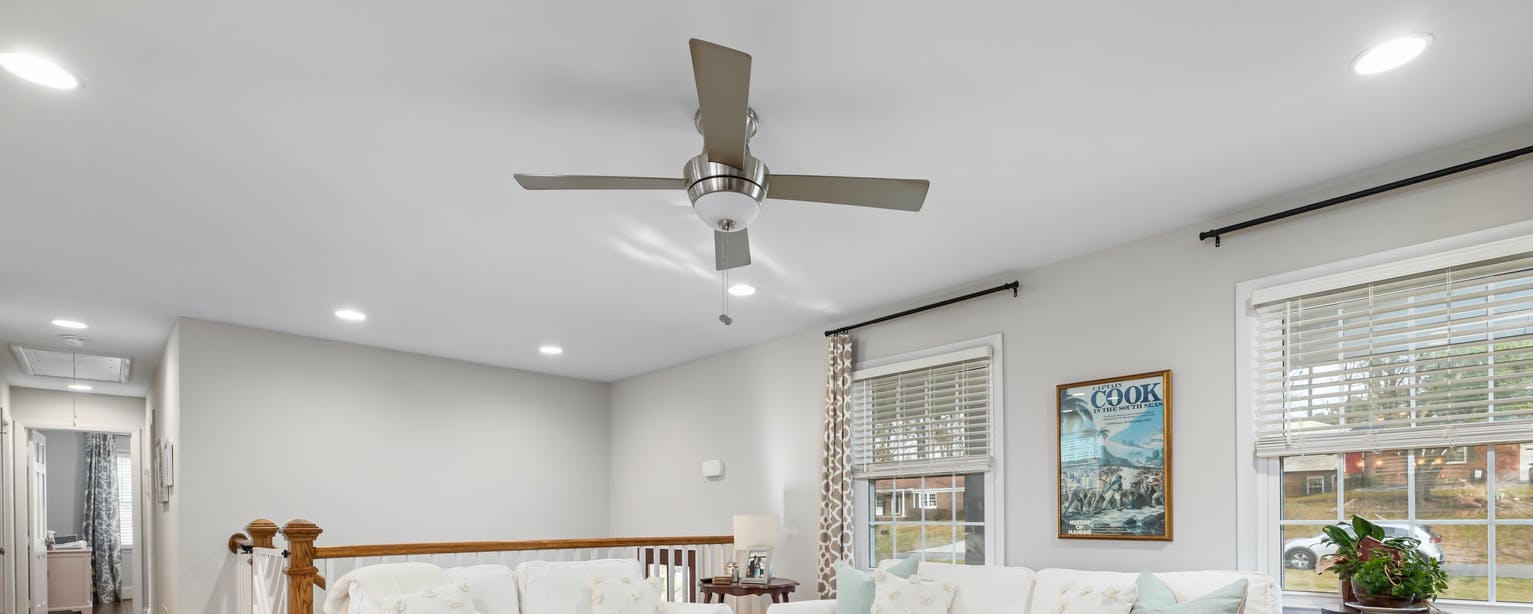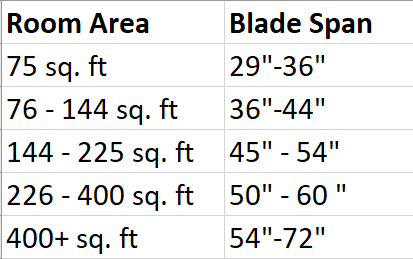
Ceiling fans are more economically friendly than air conditioning units. When choosing a ceiling fan, you must consider the size of your room and what type or style you want. The correct ceiling fan can bring both function and style to any room.
When looking for your first time, it’s essential that the size is perfect, or else this will result in ineffective use of space, leading only to more trouble than necessary! The wrong ceiling fan size can be inefficient and costly in electricity bills if used without consideration! It’s essential to choose the right size ceiling fan for your room. A small one will have trouble cooling it, while an oversized unit might cause you safety problems.
How Do You Determine the Right Ceiling Fan Size for Your Room?
The room size is determined by multiplying the length and width in feet to get the square footage. The resulting number gives you how many square feet are located within that area, which will help determine what type or style of ceiling fan would be best for this space! When knowing the square footage of your room, measure it with accurate measurements to select a suitable fan size.
You can use this ceiling fan size guide to identify the correct size ceiling fan for you:

For those who are looking for a specific type or size of ceiling fans, the cubic Feet per minute (CFM) range can give you an idea. However, it’s important to take into account whether your room has well-insulated walls because this will affect how much air is moving through them during
How to Measure the Ceiling Fan Blades
When you’re shopping for ceiling fans, it’s important to know the fan blade span, while most ceiling fan manufacturers provide this detail on the package, it is still important to know it yourself. The measurements are referred to as span or sweep which is determined by the diameter and how many there are on each fan blade.
The majority of ceiling fans have an even number, so measure the distance between any two blades to determine their diameter. If the blade of a ceiling fan has an odd number, so it’s important to measure the distance between its tip and center before multiplying that same amount by two, this will give you the diameter.
Measuring the Downrod Ceiling Fan
The downrod, compared to flush mount fans is the part of your ceiling fan that connects it to its mounting bracket, especially on a sloped ceiling, and you should make sure this piece fits into place properly for safety reasons.
This means ensuring there’s enough space between where someone would be standing (or sitting) while they’re using their device underneath one if these units are installed high up – which also reduces noise levels significantly! To keep your home safe, you should ensure that the fan blades have at least eight inches of space above them and they must also hang at least seven feet off the ground.
If you have a low-profile like a hugger or flush mount fan, then it should be at least 12 inches from the fixture to where your head would go when lying down. This will ensure that air circulation is optimal and not obstructed by other objects of height higher than 9 feet
Buying Guide Specific Rooms
Living Room
Think about the living room or family room as your home’s central place for entertaining guests or simply relaxing. When choosing a ceiling fan, you’ll likely consider a sleek style first with the remote control but pay attention to the size and how much air it moves to since this can make all of the difference when trying to keep cool in the summer months!
Bedroom
The two most common size options for bedrooms’ ceiling fans are regular and large. If you have a 144-225 sq ft bedroom, a medium ceiling fan with a blade span between 44″ – 50″, will be perfect! Make sure that your fan has an airflow rating higher than 1 600 CFMs or 4 500 RPMs before buying it so they can have better circulation in this larger space.
Other Factors to Consider when Installing Ceiling Fans
For a ceiling fan with light kits, keep in mind that the light kit will add an extra inch or two when measuring height. This may seem like a small thing but it can make a big difference when you install a ceiling fan! Take potential obstacles like cabinets and furniture into account when measuring your downrod length.
The tips of the blades need about 30 inches to properly fit in with their space, so make sure you account for this extra distance as well! Ceiling fans come in various weights, so make sure your mounting surface can support the weight of whatever fixture you plan on installing.
The electrical box must also be accessible for installation- consider if it will require access below grade or above ground level as well!
Last Updated on
- How to clean standing fan easily - September 24, 2022
- How Long Does a Fan Last? – Electric fan Maintenance Guide - September 23, 2022
- Can electric fans be left on 24 hours a day? - September 23, 2022
